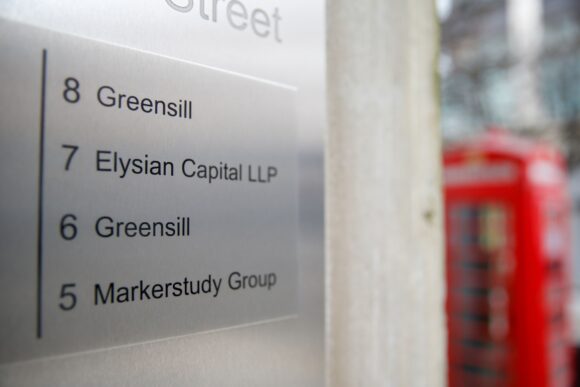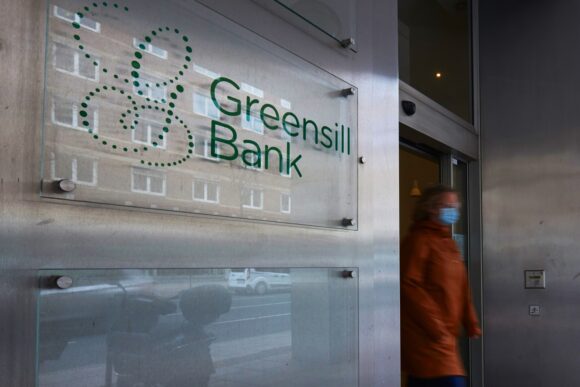Lex Greensill promoted his business as the future of finance, talking up a technology superior to Wall Street rivals that allowed him to lend at super-low rates based on real-time information.
But former staff at Greensill Capital, as well as others familiar with its computer systems, paint a very different picture of the technological abilities of the lender.
Rather than risk being assessed through proprietary tech innovations, much of the work was done on spreadsheets or other basic programs. New projects were not always successful, and even near the end, the business was scrambling to find a partner to fill the gap in its tech capabilities.
Read more: Tokio Marine Faces Larger-Than-Expected Exposure to Greensill Capital Meltdown
The company’s inner workings have been in the spotlight after it collapsed this month, and the descriptions raise fresh questions about how it went from startup to tech unicorn to an estimated $7 billion valuation at one point. Along the way, its Australian founder lured in investors such as SoftBank Group Corp., had former UK Prime Minister David Cameron as an adviser, and forged lucrative ties with Credit Suisse Group AG.

Photo credit: Hollie Adams/Bloomberg/Bloomberg
This story is based on conversations with people involved with Greensill and familiar with its operations, who spoke on condition of anonymity, as well as court filings and documents.
A key example of Greensill’s hype was its reliance on tech partner Taulia Inc., which provided a platform to link to firms using supply-chain financing.
As Greensill went into meltdown, Taulia secured funding from banks including JPMorgan Chase & Co., allowing it to keep servicing firms that had previously relied on Greensill. That killed plans by Apollo-backed Athene Holdings Ltd. to buy Greensill’s IT systems and intellectual property.
The fact that Athene walked away is indicative of the low value of Greensill’s tech. Even during negotiations, Athene was willing to pay just $60 million.
According to one person familiar with the company, there was a telling moment as the crisis escalated. In the week before its collapse, staff at the lender approached a fintech rival, admitting that Greensill had little in the way of tech and asking if the competitor could become a service provider for the firm. Due to Greensill’s collapse, those conversations never progressed. Administrators for Greensill declined to comment for this story.
Some of what Greensill did required very little in the way of advanced software, particularly supply chain finance, the business it was most vocal about. Financing invoices is a straightforward process, involving buying the promise of future payment at a discount, so that you can receive the full payment later. The more complicated tech was the interface between firms and fund providers, much of which was handled by partner Taulia Inc. and other third party providers.
But Greensill had another business called “future accounts receivable finance.”
It publicized this offering in its early payment scheme for UK pharmacies, where it would extend what were effectively unsecured loans to small chemists at ultra-low rates. Similar facilities were provided to Bluestone Resources Ltd., Softbank portfolio firms and, its biggest client, Sanjeev Gupta’s GFG Alliance.
Related: Credit Suisse Faces Questions from Regulators, Insurers After Collapse of Greensill Funds
What Greensill said it could do was look at past payments and, using complex algorithms, figure out future receivables and lend against sales that hadn’t yet happened. While this is a riskier form of lending, Greensill said the systems were highly accurate and it could charge lower rates than might otherwise be offered. Many of these were then sold on to funds run by Credit Suisse.
Tech capabilities were one of the chief reasons that Greensill could compete with financial giants like Citigroup Inc. and HSBC Holdings Plc, it said.
But all the staff Bloomberg News spoke to deny that it could have predicted future payments with accuracy. Fluctuations in the price of some of the goods sold, steel for instance, made this an almost impossible task, some of the people said.
Over the last year, it had made a concerted effort to replace outdated technology, hiring London-based tech consultancy Equal Experts. But Equal Experts withdrew from the project early, frustrated that it couldn’t put forward ideas freely without being shot down, people familiar with the matter said. Equal Experts didn’t respond to requests for comment.
Greensill said it was “changing finance to change the world.” But while it had made some progress on machine learning and AI, those efforts were still in their infancy. Much of the company was still run off basic spreadsheets even at the end.
Top photograph: A visitor exits the Greensill Bank AG offices in Bremen, Germany, on Friday, March 12, 2021. Germanys financial regulator is nearing a decision to wind down Greensill Bank after its parent company filed for insolvency, opening the door for most depositors to get reimbursed. Photographer: Dominik Reipka/Bloomberg
Was this article valuable?
Here are more articles you may enjoy.



 USI Says Lockton, Former Team Leader Poached Workers, Harmed Client Relations
USI Says Lockton, Former Team Leader Poached Workers, Harmed Client Relations  Class Action Accuses Toyota of Illegally Sharing Drivers’ Data With Progressive
Class Action Accuses Toyota of Illegally Sharing Drivers’ Data With Progressive  Florida Bill Advances, Would End Board of Engineers, Other Professional Agencies
Florida Bill Advances, Would End Board of Engineers, Other Professional Agencies  White House Seeks to Bring Financial Regulators Under Its Sway
White House Seeks to Bring Financial Regulators Under Its Sway 

